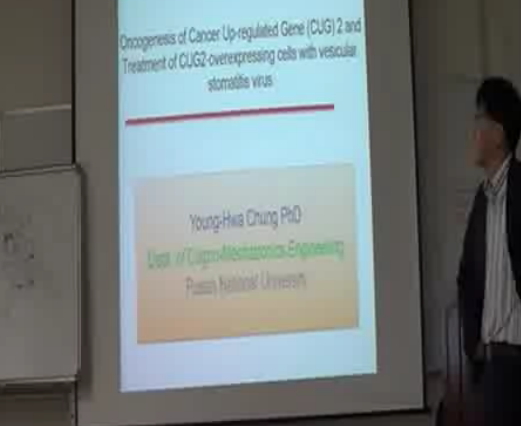Objective: For establishing effective pharmacovigilance (PV) system, it is important to not only detect signal and assess adverse drug reactions (ADRs), but also communicate with ADR reporters and provide safety information to the public. We identifie...
http://chineseinput.net/에서 pinyin(병음)방식으로 중국어를 변환할 수 있습니다.
변환된 중국어를 복사하여 사용하시면 됩니다.
- 中文 을 입력하시려면 zhongwen을 입력하시고 space를누르시면됩니다.
- 北京 을 입력하시려면 beijing을 입력하시고 space를 누르시면 됩니다.

국외 약물감시기관의 시판 후 약물유해사례 보고자료 공개 현황 = The Status of Public Access to Postmarketing Adverse Event Reporting Data in Foreign Pharmacovigilance-related Organizations
한글로보기https://www.riss.kr/link?id=A100326164
- 저자
- 발행기관
- 학술지명
- 권호사항
-
발행연도
2015
-
작성언어
-
- 주제어
-
KDC
500
-
등재정보
KCI등재
-
자료형태
학술저널
- 발행기관 URL
-
수록면
53-63(11쪽)
-
KCI 피인용횟수
0
- DOI식별코드
- 제공처
-
0
상세조회 -
0
다운로드
부가정보
다국어 초록 (Multilingual Abstract)
Objective: For establishing effective pharmacovigilance (PV) system, it is important to not only detect signal and assess adverse drug reactions (ADRs), but also communicate with ADR reporters and provide safety information to the public. We identified the situation of foreign PV-related organizations in public access to post-marketing adverse event (AE) reporting data. And we would provide valuable resources in determining the public access policy for AE report data. Methods: We investigated the current status of public access to AE reporting data in foreign PV-related organizations; WHO-Uppsala Monitoring Center (Sweden), U.S. Food and Drug Administration (US), Medicines and Healthcare Products Regulatory Agency (UK), Health Canada (Canada), Therapeutic Goods Administration (Australia), Pharmaceuticals and Medical Devices Agency (Japan), and China Food and Drug Administration (China). Results: Among the foreign PV-related organizations, we identified there were three types of public access to AE reporting data; providing statistical analysis like annual reports, detected signals from AE reports, and individual case safety reports. Conclusion: Public access policy concerning AE reporting data in foreign PV-related organizations can be used as a good reference in developing the appropriate method and accessing levels in disclosing Korea Adverse Event Reporting System (KAERS) data.
참고문헌 (Reference)
1 대한약물역학위해관리학회, "약물역학" 서울대학교출판문화원 77-78, 2011
2 Shin SM, "미국의 약물안전성감시체계 : 메드와치(MedWatch)시스템을 중심으로" 6 : 73-78, 2013
3 "WHO Pharmaceuticals Newsletter"
4 WHO-Uppsala Monitoring Center (WHO-UMC)., "VigiLyze"
5 WHO-Uppsala Monitoring Center (WHO-UMC)., "Uppsala Reports 65"
6 WHO-Uppsala Monitoring Center (WHO-UMC)., "Uppsala Reports"
7 "U.S. Druginformer"
8 "U.S. Drugcite"
9 Medicines and Healthcare Products Regulatory Agency (MHRA)., "Trends in adverse drug reaction (ADR)reporting 2008-2012."
10 Korea Institute of Drug Safety and Risk Management (KIDS)., "Trends in Adverse Drug Reaction Reporting"
1 대한약물역학위해관리학회, "약물역학" 서울대학교출판문화원 77-78, 2011
2 Shin SM, "미국의 약물안전성감시체계 : 메드와치(MedWatch)시스템을 중심으로" 6 : 73-78, 2013
3 "WHO Pharmaceuticals Newsletter"
4 WHO-Uppsala Monitoring Center (WHO-UMC)., "VigiLyze"
5 WHO-Uppsala Monitoring Center (WHO-UMC)., "Uppsala Reports 65"
6 WHO-Uppsala Monitoring Center (WHO-UMC)., "Uppsala Reports"
7 "U.S. Druginformer"
8 "U.S. Drugcite"
9 Medicines and Healthcare Products Regulatory Agency (MHRA)., "Trends in adverse drug reaction (ADR)reporting 2008-2012."
10 Korea Institute of Drug Safety and Risk Management (KIDS)., "Trends in Adverse Drug Reaction Reporting"
11 Pharmaceuticals and Medical Devices Agency (PMDA)., "The web searching pages in AE reports"
12 Pharmaceuticals and Medical Devices Agency (PMDA)., "The pharmaceuticals and medical devices agencyannual report FY 2012"
13 Lianne P, "Public good, personal privacy : a citizens’ deliberation about using medical information for pharmacoepidemiological research" 65 : 150-156, 2011
14 U.S. Food and Drug Administration (US FDA)., "Potential Signals of Serious Risks/New Safety Information Identified from the FDA Adverse Event Reporting System (FAERS)"
15 European Medicines Agency (EMA)., "Pharmacovigilance Risk Assessment Committee (PRAC) recommendations on safety signals"
16 Korea Institute of Drug Safety and Risk Management (KIDS)., "Operation Guide of KIDS KAERS Database"
17 Therapeutic Goods Administration (TGA)., "Medicines and vaccines adverse event reports-Statistics for 2013" Therapeutic Goods Administration
18 Therapeutic Goods Administration (TGA)., "Medicines Safety Update"
19 Health Canada (HC)., "MedEffect"
20 Walter K, "Manufacturer's drug interaction and postmarketing adverse event data: what are appropriate uses?" 24 (24): 637-643, 2001
21 "Korea Institute of Drug Safety and Risk Management"
22 Korea Institute of Drug Safety and Risk Management (KIDS)., "KIDS Potential Signal Communication"
23 "Government 3.0"
24 U.S. Food and Drug Administration (US FDA)., "FDA adverse event reporting system (FAERS) Statistics"
25 Pharmaceuticals and Medical Devices Agency (PMDA)., "Drug Risk Information of Ongoing Evaluation"
26 Medicines and Healthcare Products Regulatory Agency (MHRA)., "Drug Analysis Prints (DAPs)"
27 Therapeutic Goods Administration (TGA)., "Database of Adverse Event Notifications"
28 China Food and Drug Administration (CFDA)., "China Pharmaceutical Newsletter"
29 Health Canada (HC), "Canadian Adverse Reaction Newsletters(CARN)"
30 Health Canada (HC)., "Canada Vigilance Adverse Reaction Online Database"
31 China Food and Drug Administration (CFDA)., "CFDA releases 2013 Annual Report for National Adverse Drug Reaction Monitoring"
32 Pharmaceuticals and Medical Devices Agency (PMDA)., "Annual reports"
33 Therapeutic Goods Administration (TGA)., "Adverse events:Australian statistics on medicines. Therapeutic Goods Administration"
동일학술지(권/호) 다른 논문
-
국내 성인 여성의 경구피임제 사용현황 및 안전성에 대한 설문조사
- 대한보건협회
- 엄혜연 ( Hye Yeon Um )
- 2015
- KCI등재
-
2012년 환자조사자료를 사용한 급성심근경색증 환자의 이용병원 소재지역 사례연구
- 대한보건협회
- 박현아 ( Hyun Ah Park )
- 2015
- KCI등재
-
신체활동 특성이 노인 만성질환자의 정신건강에 미치는 영향
- 대한보건협회
- 박재우 ( Jae Woo Park )
- 2015
- KCI등재
-
- 대한보건협회
- 유양경 ( Yang Gyeong Yoo )
- 2015
- KCI등재
분석정보
인용정보 인용지수 설명보기
학술지 이력
| 연월일 | 이력구분 | 이력상세 | 등재구분 |
|---|---|---|---|
| 2026 | 평가예정 | 재인증평가 신청대상 (재인증) | |
| 2020-01-01 | 평가 | 등재학술지 유지 (재인증) |  |
| 2017-01-01 | 평가 | 등재학술지 유지 (계속평가) |  |
| 2013-01-01 | 평가 | 등재학술지 선정 (등재후보2차) |  |
| 2012-01-01 | 평가 | 등재후보 1차 PASS (등재후보1차) |  |
| 2010-01-01 | 평가 | 등재후보학술지 선정 (신규평가) |  |
학술지 인용정보
| 기준연도 | WOS-KCI 통합IF(2년) | KCIF(2년) | KCIF(3년) |
|---|---|---|---|
| 2016 | 1.31 | 1.31 | 1.18 |
| KCIF(4년) | KCIF(5년) | 중심성지수(3년) | 즉시성지수 |
| 1.1 | 1.15 | 1.478 | 0.29 |




 KCI
KCI KISS
KISS






